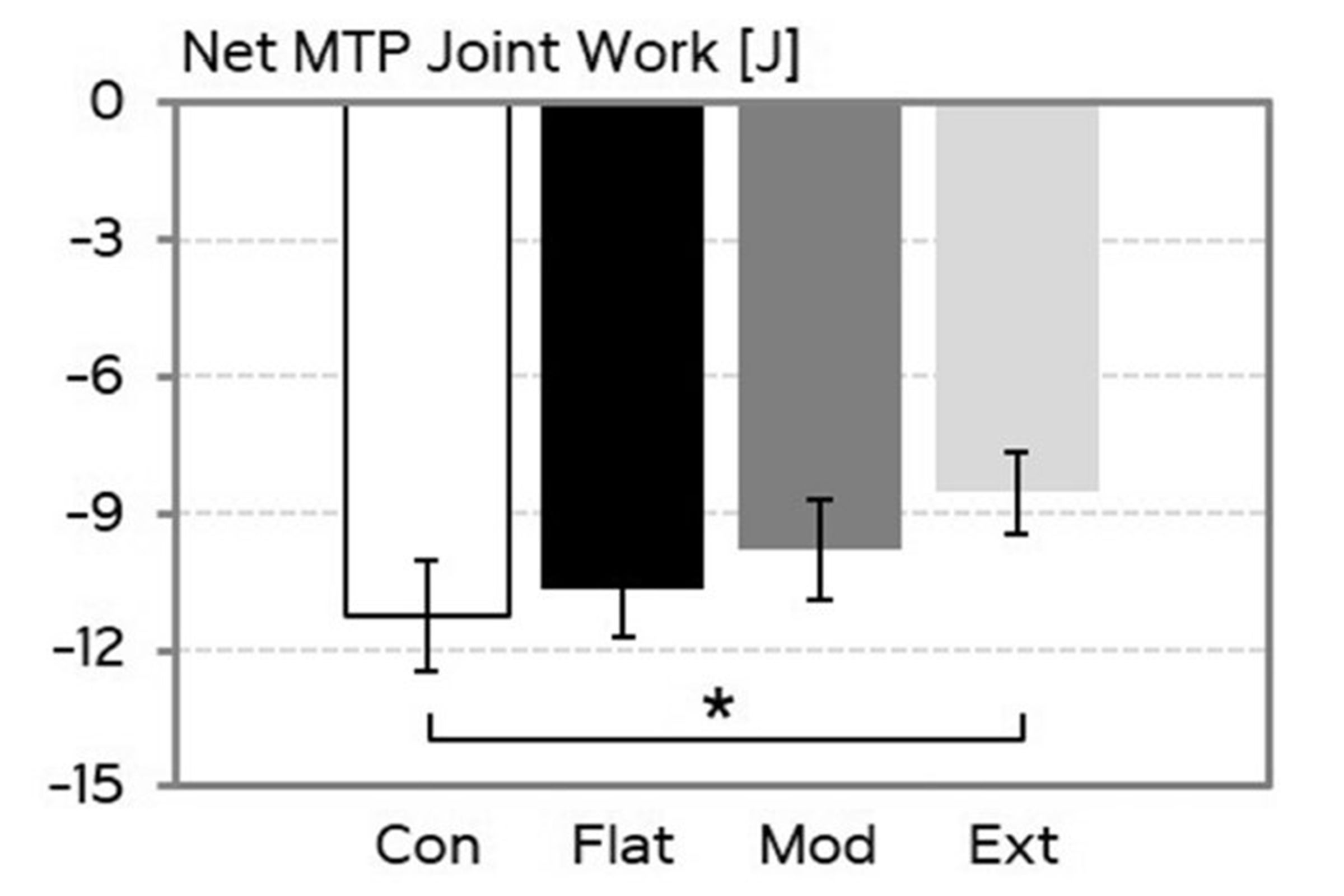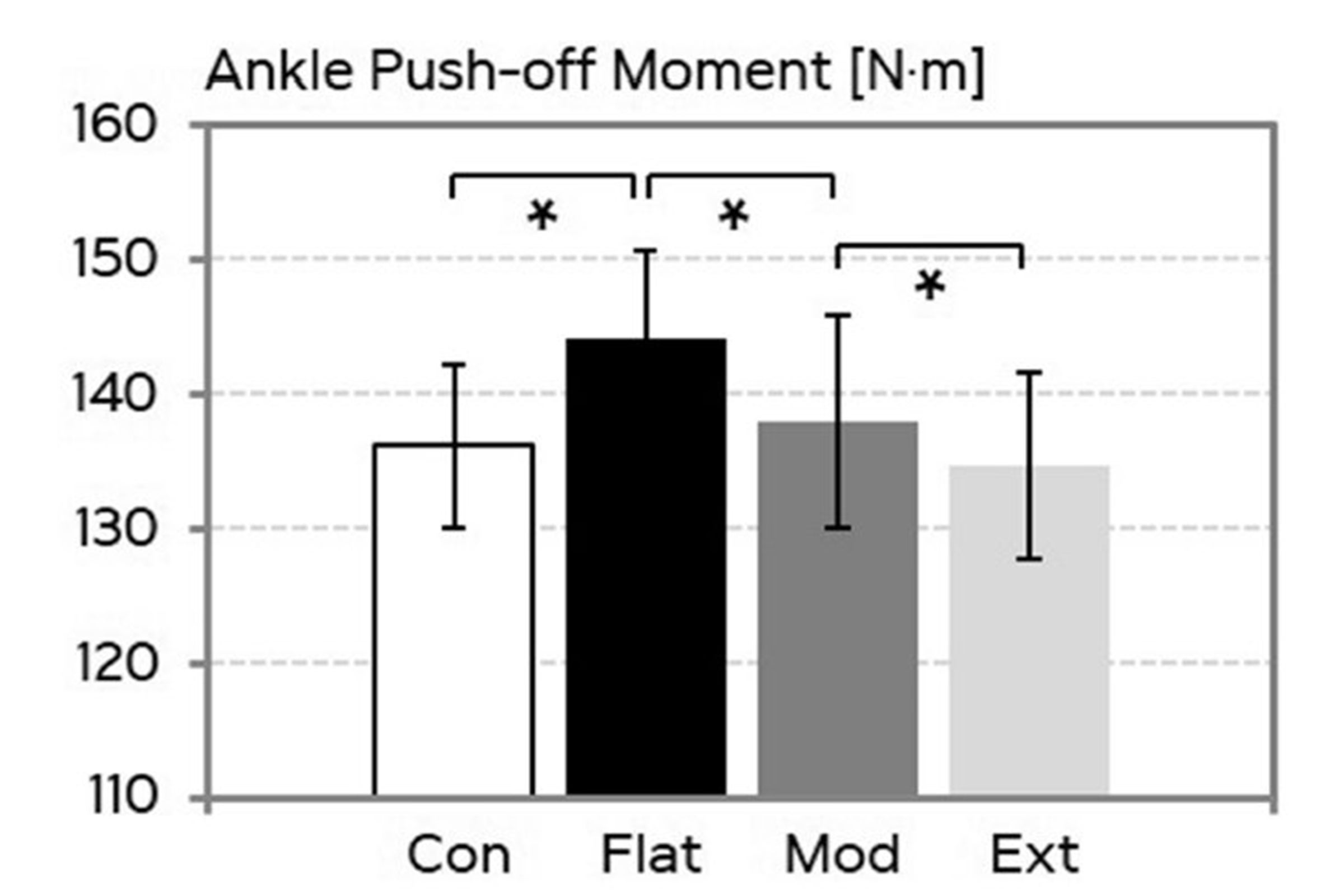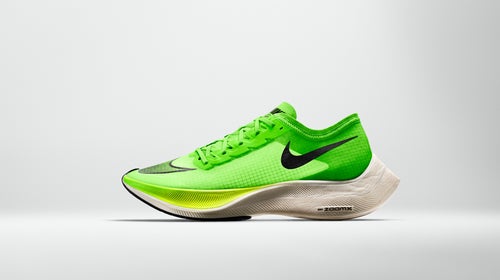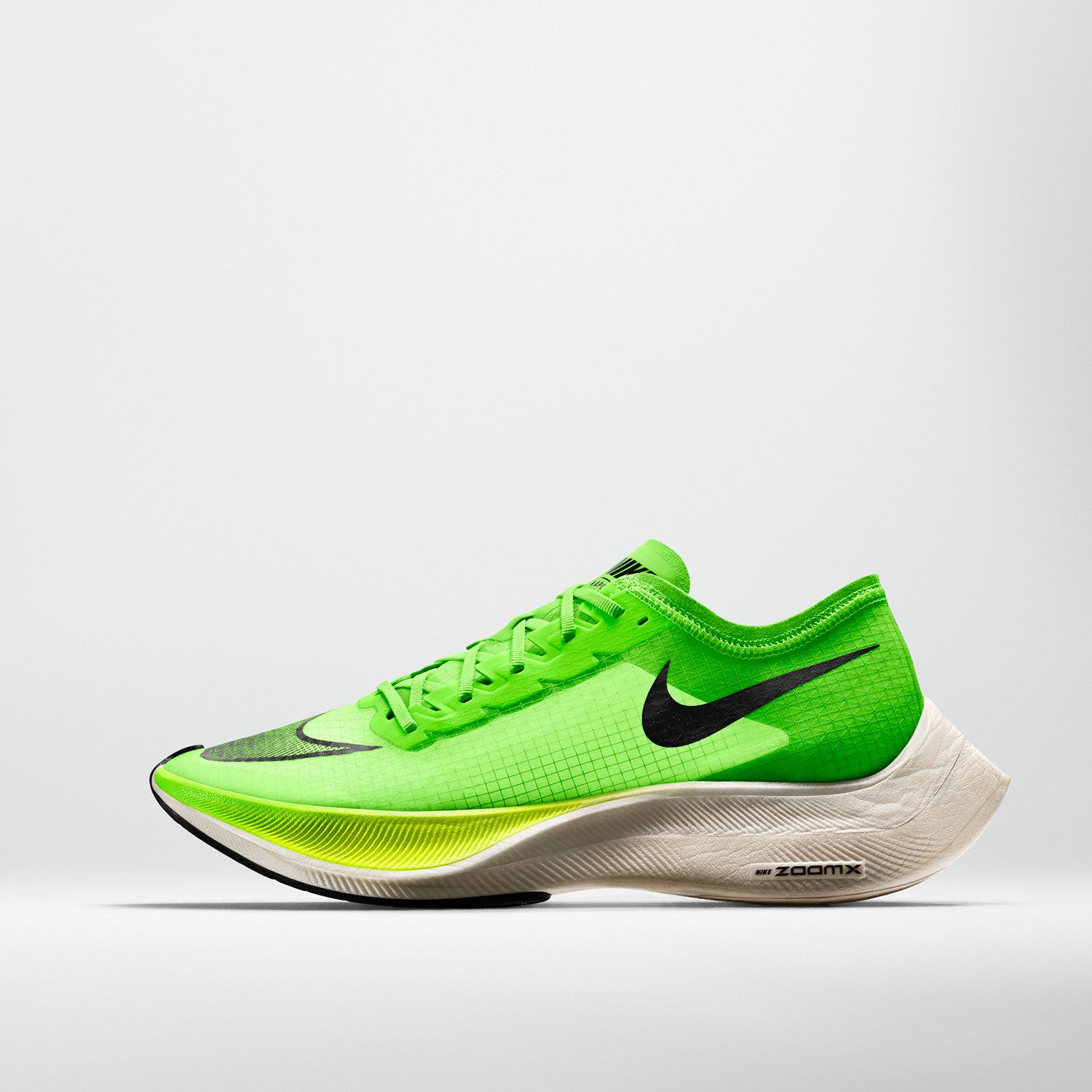Some of the world’s leading shoe geeks gathered in the Canadian Rockies last week for the annual , an intimate get-together where both academic and industry researchers swap insights and, occasionally, data. Among the presentations were two from researchers at the Nike Sport Research Lab, shedding light on two key questions about the company’s controversial Vaporfly 4% shoes: how does the carbon fiber plate work? And does the thick cushioning protect your legs from muscle damage?
The question of how the shoes manage to produce their eponymous four-percent energy saving has, of course, been chewed over many times in the two years since their public release. This article from last November is my most recent attempt to grapple with the question, based on research from a University of Colorado team. One big problem with that research: the scientists could only test as-sold versions of the shoe, with the curved carbon fiber plate embedded in a thick layer of ZoomX foam. What would happen if you took the plate out, or varied its geometry? Only Nike could run those tests, and they weren’t revealing anything.
At the symposium last week, a team led by Nike’s Emily Farina finally presented some of this kind of data; is published in Footwear Science. The results show a comparison between four Vaporfly-style shoes, identical in all respects except the carbon fiber plate. One had no plate; one had a nearly flat plate; one had a moderately curved plate; and one had an extremely curved plate akin (from what I can tell) to the actual shoe. The study used a force-measuring plate and 3D gait analysis to assess the mechanics of the ankle and metatarsophalangeal (MTP, but let’s just call it the big toe) joints in five runners.
Back in the early 2000s, a University of Calgary researcher named Darren Stefanyshyn, working with Adidas, developed mildly curved carbon fiber plates which improved running economy. The key, he suggested, was that the plate kept the big toe straighter, reducing the braking energy lost as the big toe bends. But in addition to saving energy at the toe, the plates also seemed to cost extra energy at the ankle. Nike’s innovation, which was a more radically spoon-shaped curve in the plate, claimed to reduce the lost energy at the ankle while still allowing you to save energy at the toe.
That was the theory, at least—but it was hard to evaluate it without some data. Farina’s presentation includes two key figures. The first shows the net work done at the MTP (toe) for each of the four shoes, which you can think of as the amount of energy lost with each stride:

The control shoe (Con), with no carbon plate, loses about 11 Joules per stride. Sticking a flat plate (Flat) into the midsole saves some of that energy. A moderately curved plate (Mod) saves a little more. And the extremely curved plate (Ext) saves the most energy, reducing losses by about a quarter. (To get a sense of how curved each of these plates is, check out showing a photo of one of Farina’s slides—assuming it doesn’t get taken down!)
But what’s happening at the ankle joint? That’s what the other graph shows:

Here we’re looking at the “moment” (another word for torque) applied at ankle push-off: the higher the number, the harder your calf muscles are working. Comparing the no-plate (Con) and flat-plate (Flat) shoes, you see that sticking a carbon fiber plate in the shoe costs you energy that will at least partly counterbalance the savings you’re getting at the toe. But if you add a moderate curve to the plate, the ankle cost goes down, and if you make the curve extreme, you’re back where started: your ankle isn’t working any harder than if there was no plate, so you get the best of both worlds.
One thing that’s conspicuously missing from the abstract is information about the running economy of these four shoes. Does tweaking the plate curvature (or taking it out entirely) changing the economy savings from 4 percent to 3.5 percent? Or does it mostly wipe out the gains, from 4 to 0.5 percent or something? Without that information, we can’t make any judgments about the relative importance of the plate compared to the ZoomX foam. (The Colorado study that I wrote about earlier suggested that it was the foam, not the plate, that did most of the work.)
Do these results change anything? That depends on what the question is, I guess. If you want to know how the shoes work, this data adds weight to the argument that the plates do not function as “springs.” They’re levers and stiffening splints, just like those widely used in track spikes; if anything in the shoes acts as a spring, it’s the midsole foam—just like in every other running shoe.
If you’re trying to figure out whether the shoes should be banned, on the other hand, then the results don’t really change anything, except that the rallying cry shouldn’t be “” Instead, it should be “Set limits on shoe geometry and construction to prevent competitors from getting a significant advantage on peers wearing different shoes!” That’s a reasonable point of view—one that I’ve been since the shoes came out. But instead of vilifying the specific technology in the shoe (which was always silly given the numerous other shoe companies that incorporated carbon plates in their shoes before Nike did), it requires a shift to the outcome: you ban them because they work too well, not because they’re cheating.
Now on to the second presentation, which is completely different but will end up bringing us back to the same question. Nike has been trumpeting the 4-percent energy saving since the shoe was released two summers ago, because it was backed up by peer-reviewed data. But they also kept mentioning the feedback they were getting from testers, which was that they felt less banged up and recovered more quickly after training and racing in the Vaporfly. There was no data to back that assertion up, but Nike’s Brett Kirby tried to remedy that at the symposium.
involved 14 runners training for the 2017 Portland Marathon, who were divided into two roughly equal groups running in either the Vaporfly 4% or the conventional Zoom Pegasus 34. Immediately before and after the marathon, they gave blood samples and completed a soreness survey. Sure enough, the Vaporfly runners showed lower levels of three blood measures of muscle damage and inflammation (lactate dehydrogenase, white blood cell count, interleukin-6) after the race, by between 15 and 43 percent. They also reported significantly less leg soreness.
The second part of the study involved seven of the subjects who, in random order, trained for two weeks each in the Vaporfly and the Pegasus, doing three standardized workouts per week at the same intensity each time as determined by heart rate. When training in the Vaporfly, the runners ran faster and farther—which, given the running economy advantage, you might expect. But what was interesting was that the gap : on Monday, they were 9 seconds per mile faster in the Vaporfly than the Pegasus; on Wednesday they were 15 seconds faster; on Friday they were 35 seconds faster. This suggests that they were able to handle the cumulative training load and recover more effectively, which allowed them to train harder and faster.
Now, let me dial that enthusiasm back a bit. This is an absolutely tiny study, done by the manufacturer of a shoe, and presented without peer review at a small symposium. There are plenty of reasons to take the results with a grain of salt. But they’re intriguing nonetheless, and point to a potential avenue of research for other scientists outside Nike that could yield some fruitful results. On the surface, the idea that super-cushioned shoes are easier on your legs sounds logical, but there’s actually almost no evidence that this is really true. In fact, the two studies Kirby cites to back up his statement that “softer surfaces may lessen the DOMS [delayed-onset muscle soreness] response” are obscure ones about and . This is a question begging for better answers.
If it does turn out that the Vaporfly is unusually good at protecting your legs, then it adds a twist to the debate about banning them. A key argument in favor of permitting ever-advancing sports technology is that the benefits eventually accrue to society at large: we get lighter tennis rackets and safer helmets and so on. That’s not always true: when high-tech swimsuits were banned in 2010, one reason I didn’t shed any tears was that it didn’t seem like a great loss. Squeezing into a single-use rubber corset is only worthwhile if you’re trying to win races by a fraction of second. But if the Vaporfly, in addition to boosting efficiency, helps more people run farther in greater comfort, what then?
My new book, , with a foreword by Malcolm Gladwell, is now available. For more, join me on and , and sign up for the Sweat Science .


